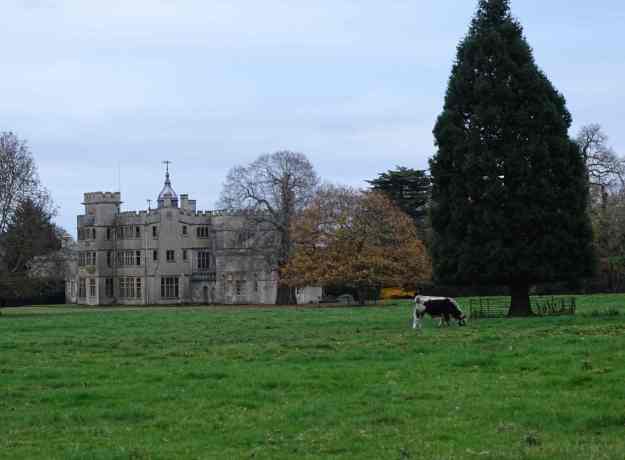
Rousham House from the park, with a member of its herd of longhorn cattle
On a chilly November afternoon almost exactly two years ago, I was fortunate enough to visit Rousham for the first time. Suitably wrapped up against the cold and damp, myself and three gardening friends explored these iconic gardens for a happy couple of hours, until the fading light brought our journey to a close.
Arriving at Rousham, there’s no trace of commercialisation, such as a café or gift shop, and tickets are purchased from a rather lonely looking machine in an adjacent outbuilding. Visitors then make their own way around the gardens, guided by a simple yellow leaflet. This low key approach feels disconcerting at first, but once acclimatised, contributes to the astonishing sense of calm that attends this special place.
Rousham House was constructed in the 1630s by Sir Robert Dormer, whose descendants continue to live here, managing the gardens and surrounding estate. The gardens at Rousham were laid out by Charles Bridgeman (1690 – 1738) in the newly fashionable English ‘naturalistic’ style. Beginning in 1719, this first phase of the landscaping was completed in 1737, after which the celebrated architect and designer William Kent (1685 – 1748) developed the house and gardens further, adding Classical features such as cascades, bridges and statuary for which Rousham is now famous.
The new ‘naturalistic’ garden landscapes of the 18th century England departed radically from previous garden styles by abandoning the symmetry and straight lines of the formal parterre garden in favour of curves that echoed the organic forms of nature. However, these gardens are not naturalistic in a modern sense, retaining many elements of formality and control.
With fallen leaves carpeting the broad pathways in shades of bronze and gold, the colours of late autumn seemed to glow with an almost luminous intensity in the soft light. The river Cherwell meanders through the gardens, and views of this ancient waterway are framed by the elegant stone arches of Kent’s Praeneste, or arcaded garden loggia. A set of 18th century wooden benches also designed by Kent, painted in a heavenly shade of grey, invite visitors to pause and enjoy the landscape vistas.
Silvery and shimmering, a rill winds its way through the trees, punctuated at one point along its course by a deep stone clad pool of clear water, the Cold Bath. From the bowling green next to the house we passed through an archway cut through an enormous yew hedge to the gateway of the walled garden. Planted with fruit trees and wide, generous herbaceous borders, the very last of the roses were still flowering. Beyond is the 17th century dovecote and the parterre garden.
The gardens are meticulously maintained. Fallen leaves on the lawns and pathways at Rousham are allowed to remain while they retain their colour, and massed evergreen shrub plantings are pruned carefully to the same height, creating large organic forms that complement the overall landscape design. Precise judgements like these are fundamental to preserving the particular atmosphere of these gardens.
According to Historic England, the gardens at Rousham are ‘the most complete surviving example of Kent’s landscape work.’ Largely untouched since they were completed in the 18th century these gardens are both a rarity and a delight.
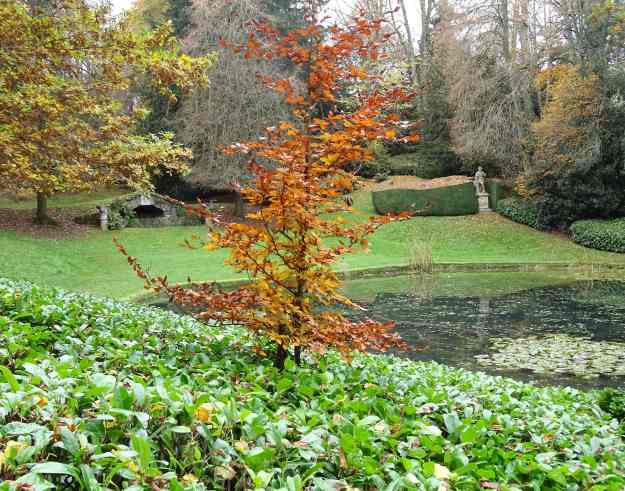
Late autumn colour and the octagonal pond
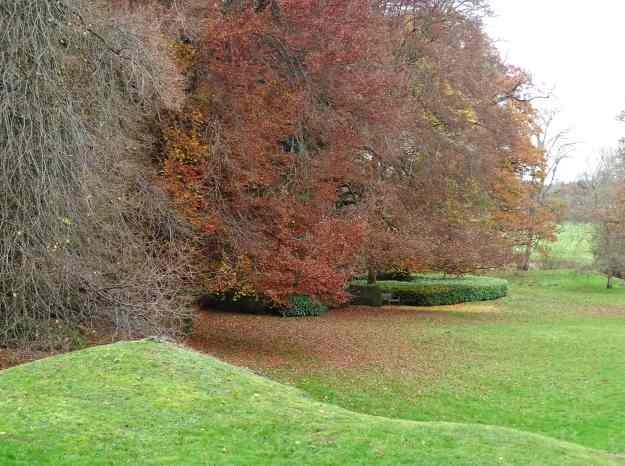
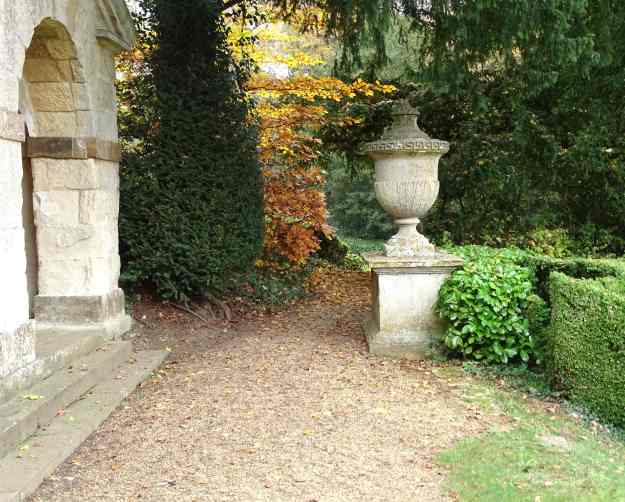
Decorative urn outside William Kent’s arcade
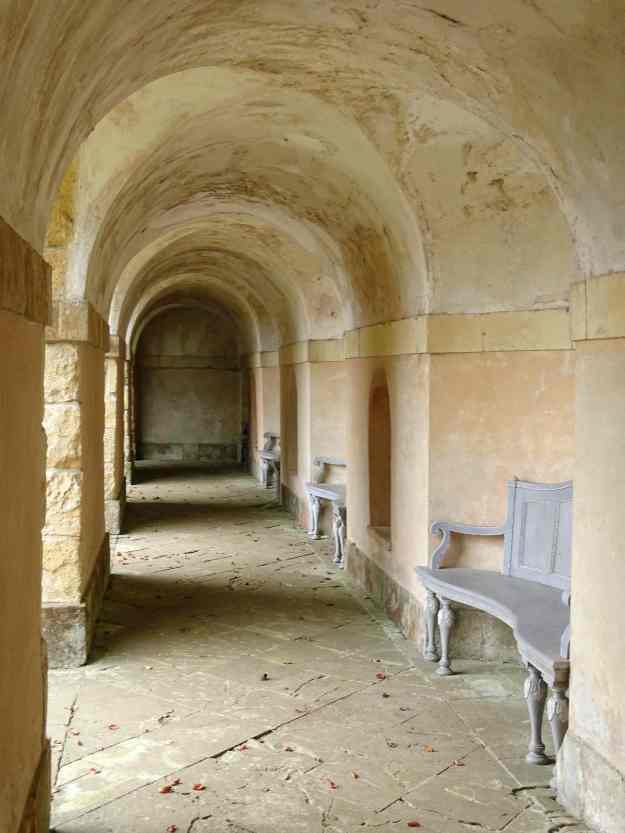
William Kent’s Praeneste and benches
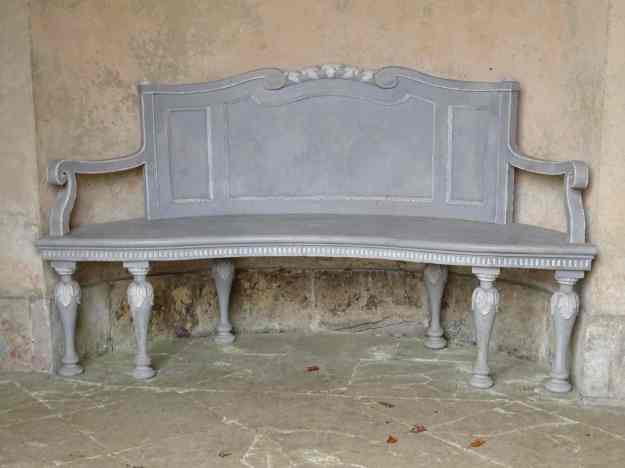
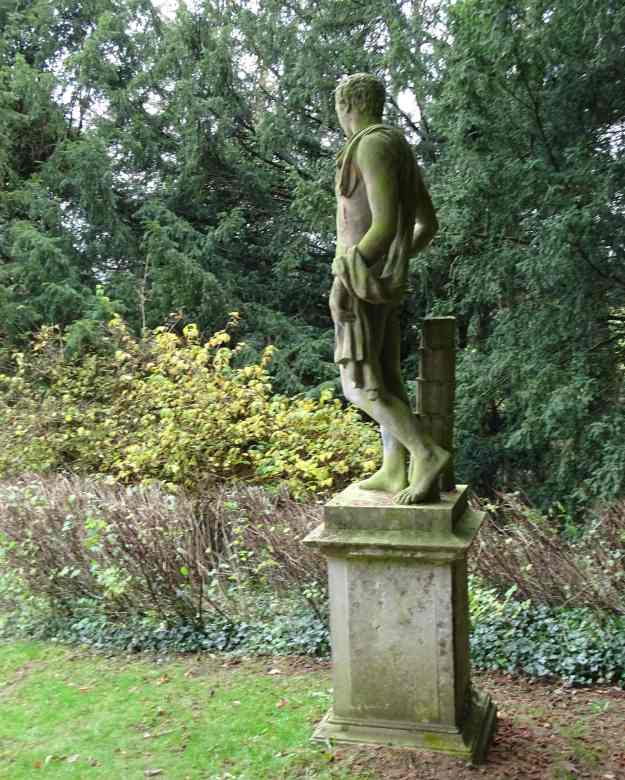
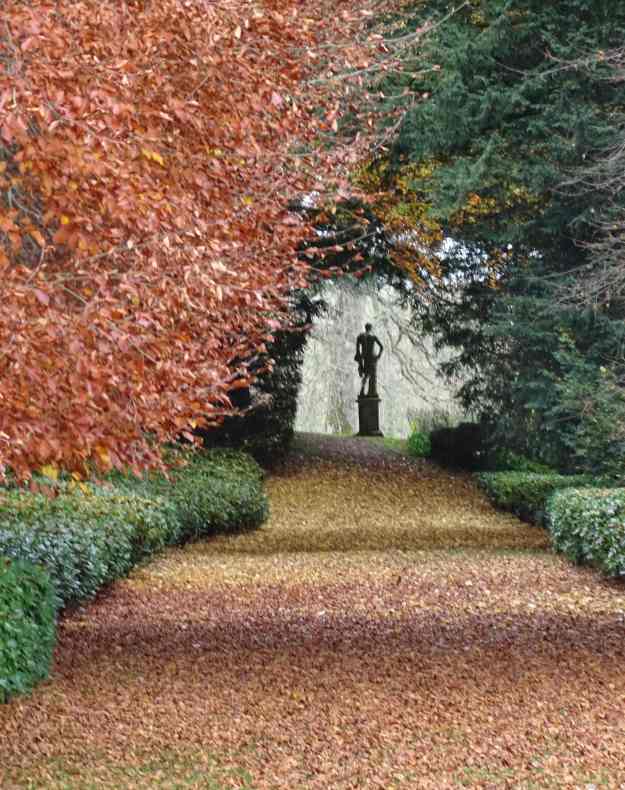
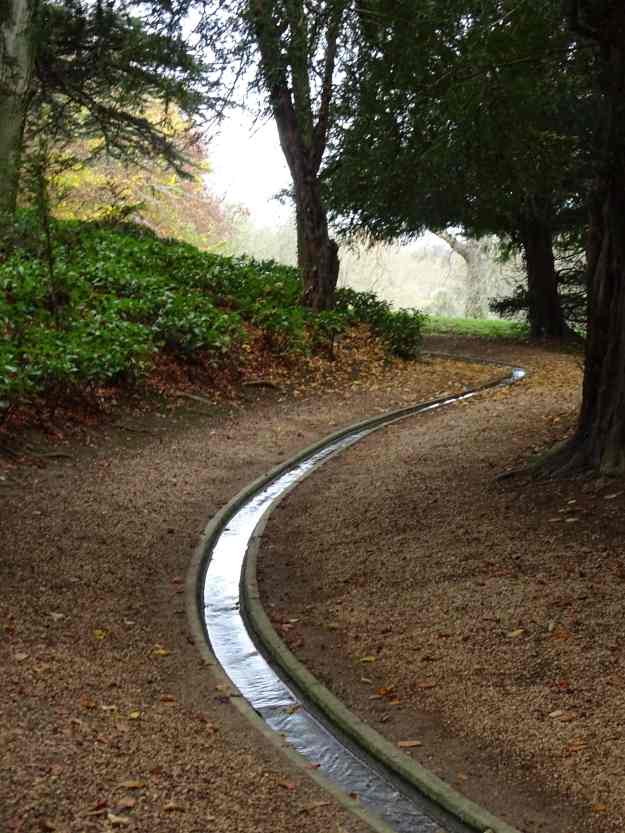
The famous rill winds its way through the trees
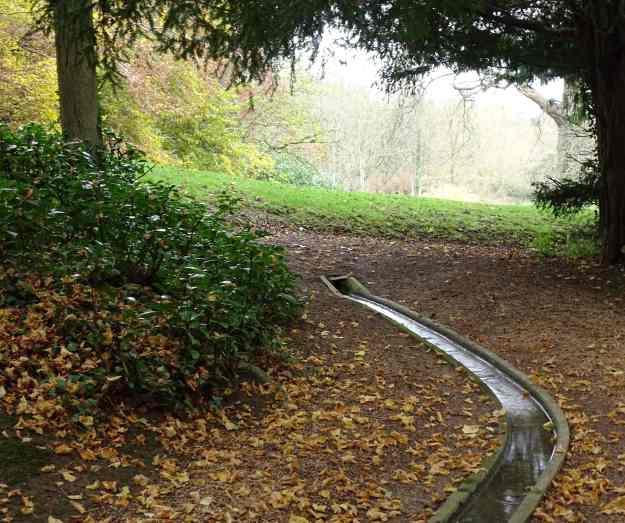
The source of the rill
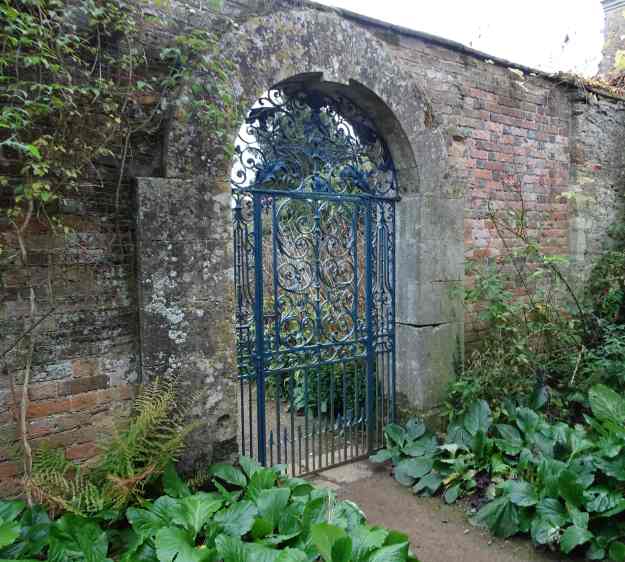
Gateway to the walled garden
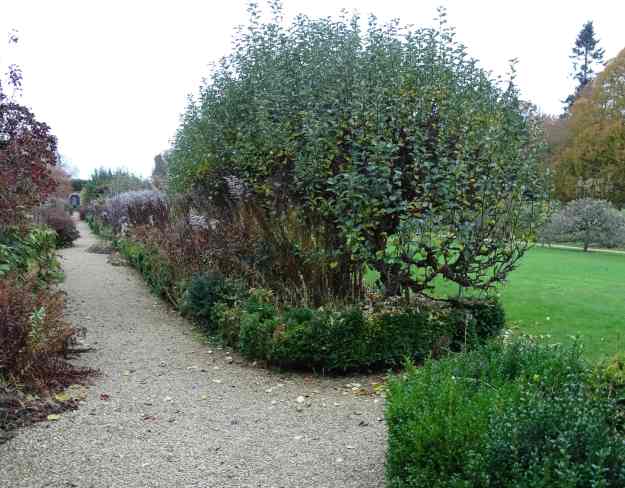
Fruit trees and herbaceous borders in the walled garden
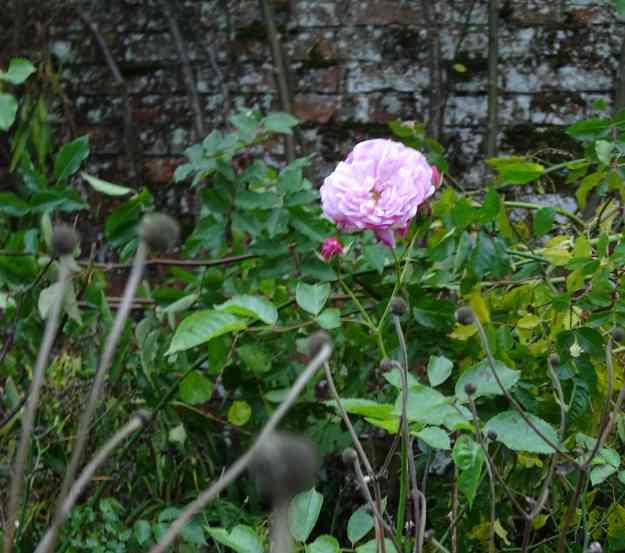
One of the last of the roses in the walled garden
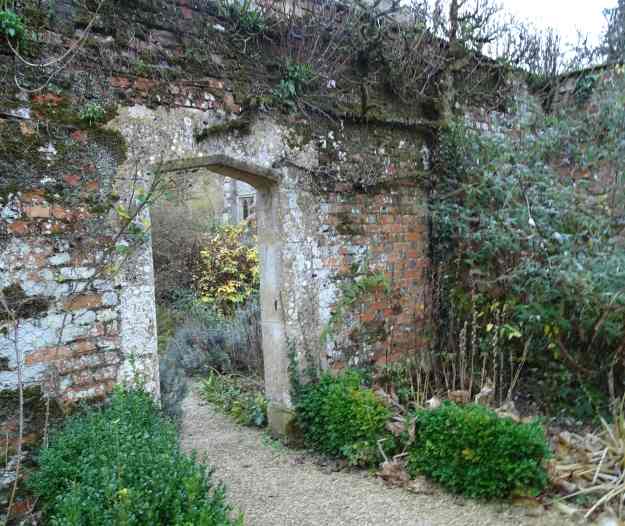
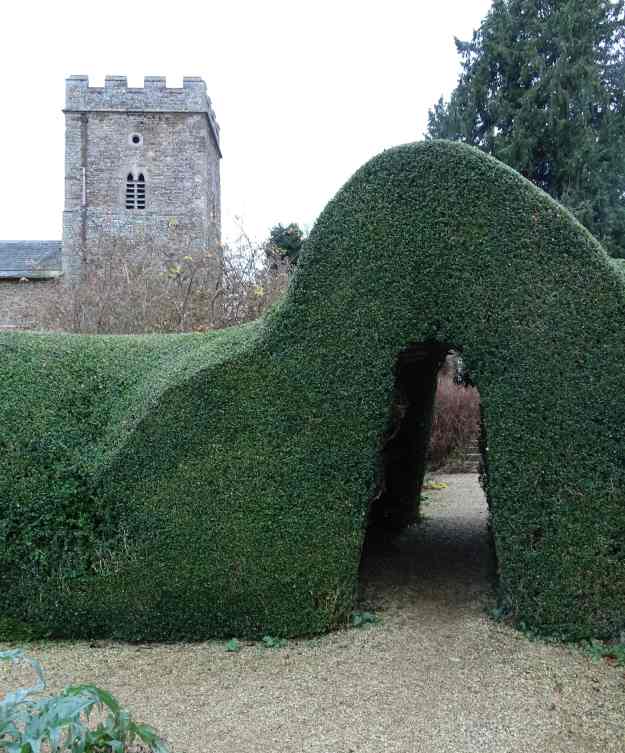
Topiarised yew archway leading to the church
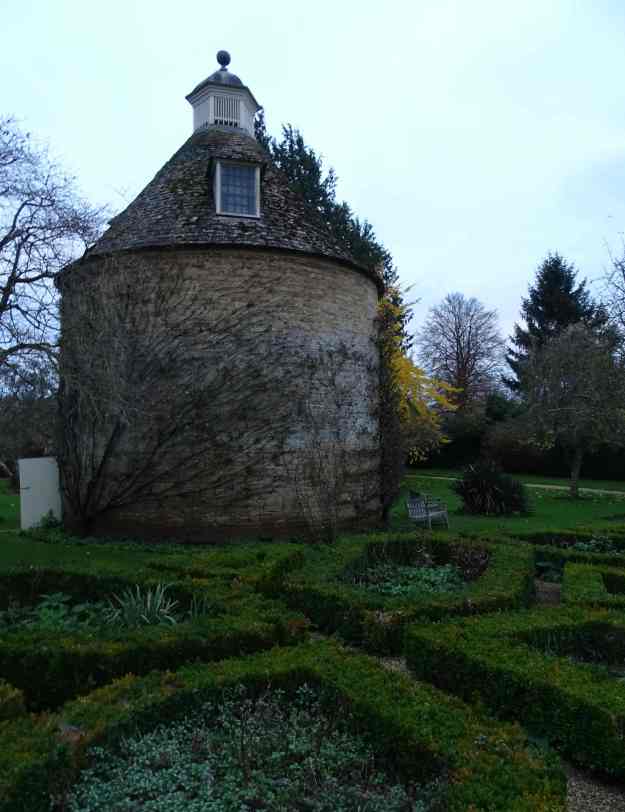
Dovecote and parterre garden
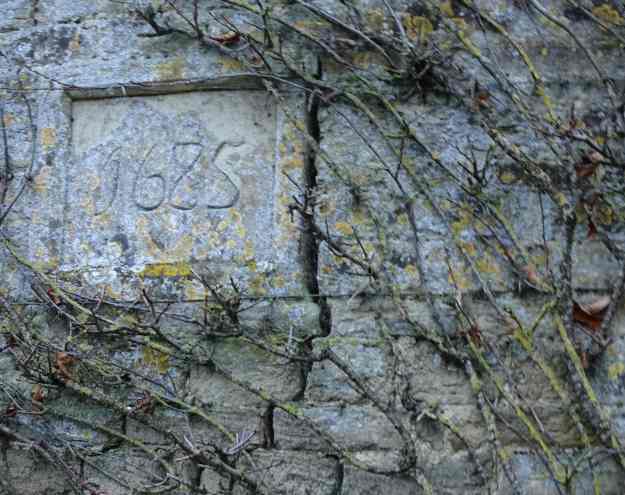
Wall of the dovecote
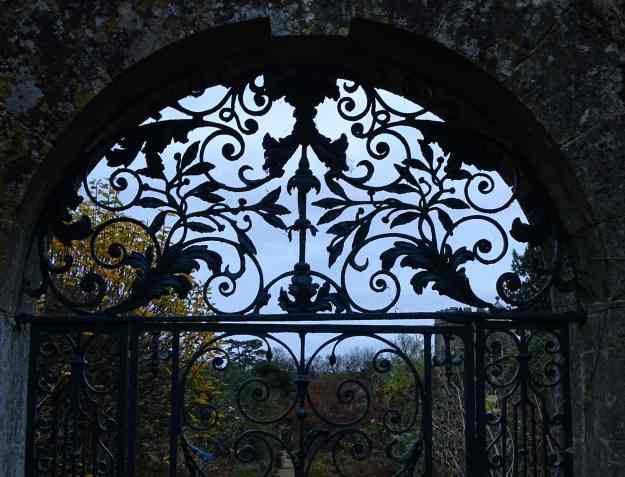
Beautiful ironwork of the walled garden gate against the fading November light
Further reading:
Rousham House and Gardens here
Historic England’s entry for Rousham here
The V&A’s biography of William Kent here
We stayed at Potato Town, on the Great Tew estate in north Oxfordshire, a perfect base for exploring the gardens of the Cotswolds here
